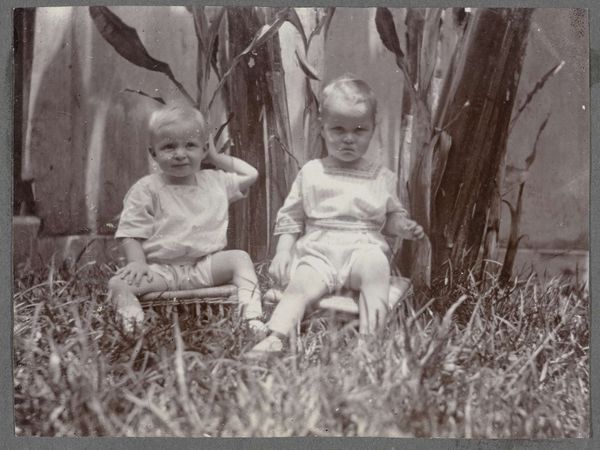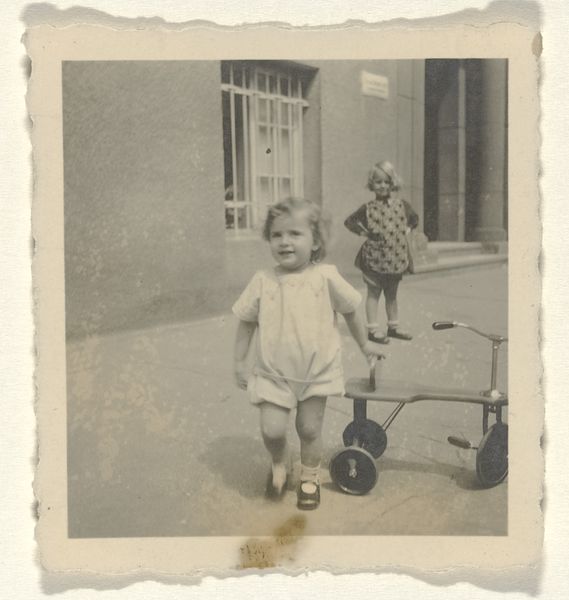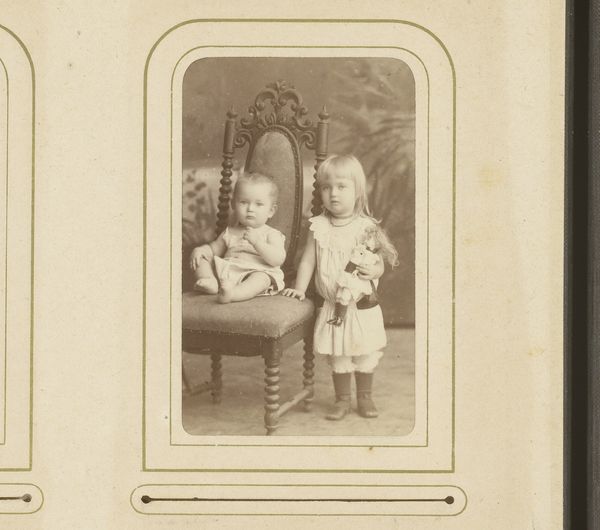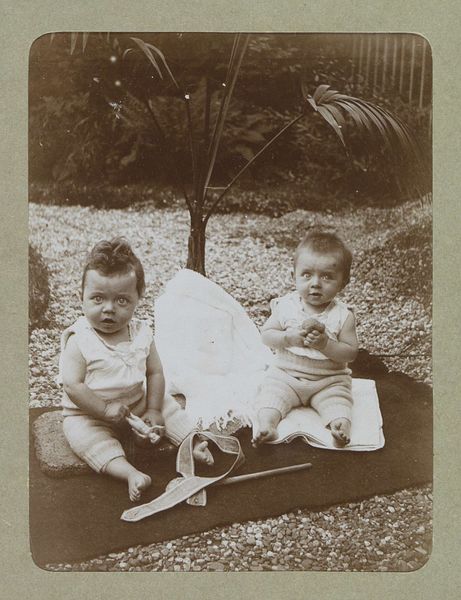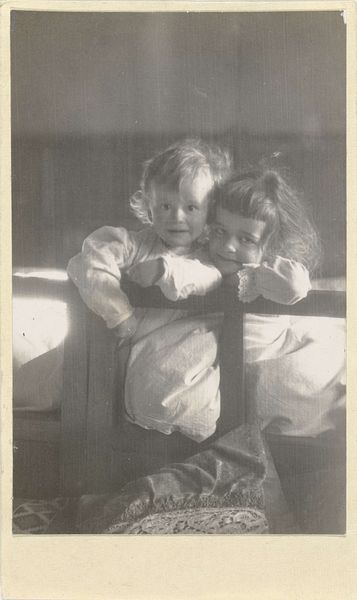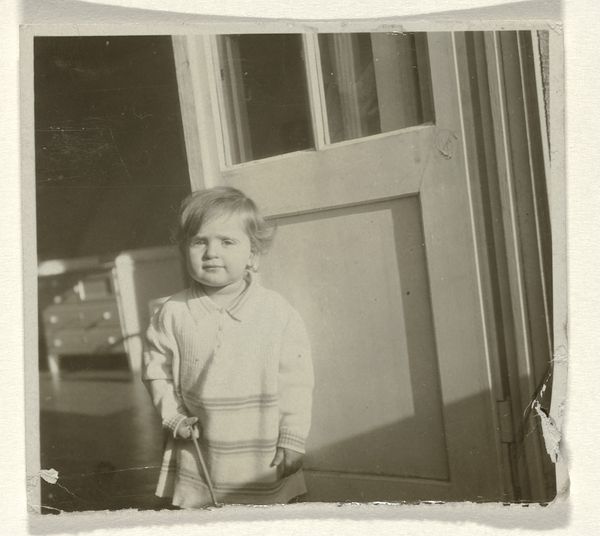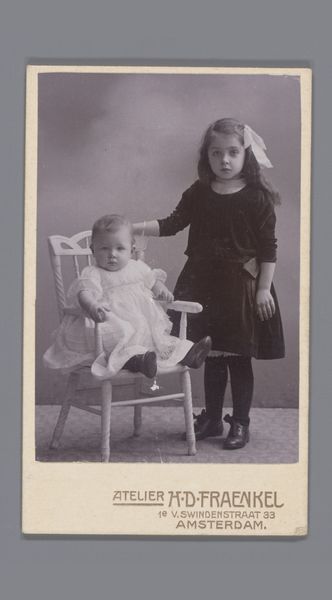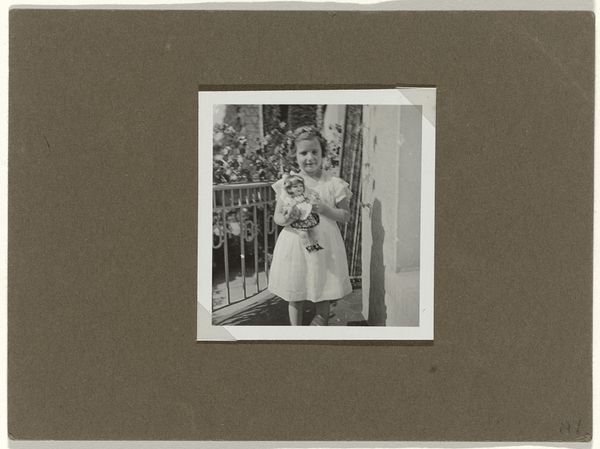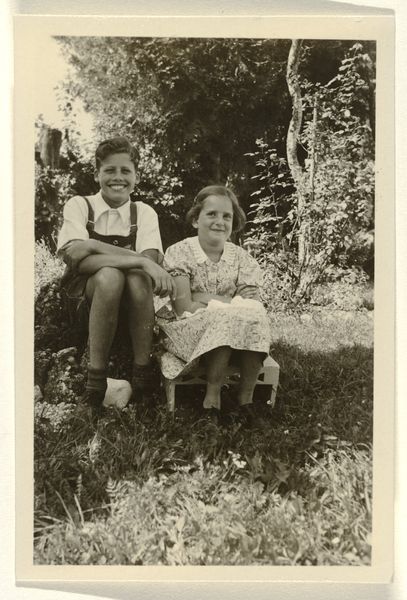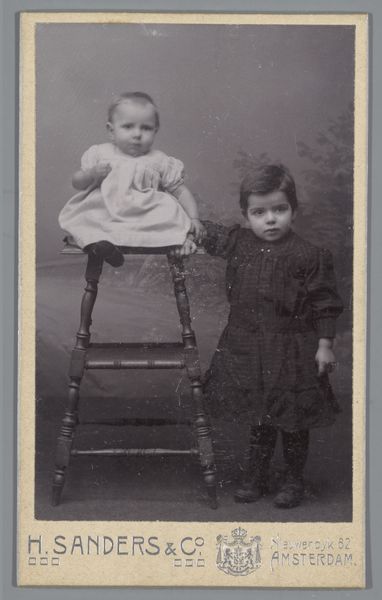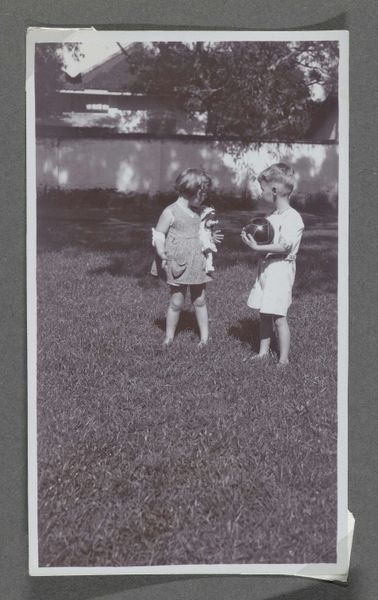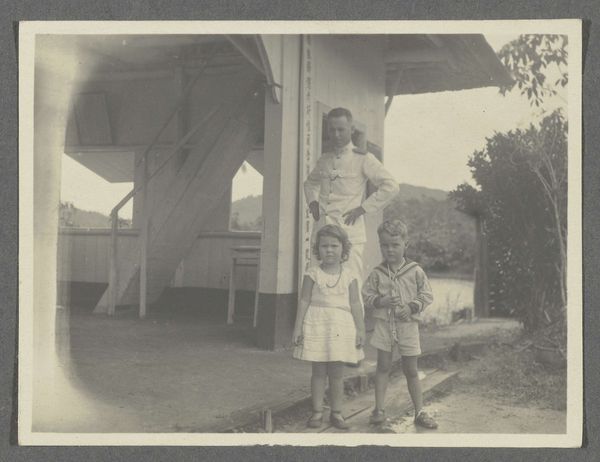
photography
#
portrait
#
pictorialism
#
desaturated colours
#
photography
#
desaturated colour
#
genre-painting
Dimensions: height 54 mm, width 65 mm
Copyright: Rijks Museum: Open Domain
Curator: Here we have a 1924 photograph titled "Klaas en Tiny Kleiterp zittend op een muur bij een huis in Singkawang," attributed to Klaas (I) Kleiterp. It’s a striking piece, wouldn't you agree? Editor: Yes, initially, I'm struck by how... muted it is. Almost sepia-toned, yet retaining a touch of desaturated color, giving it an otherworldly feel. The composition seems rather casual, but the children's serious expressions create an intriguing tension. Curator: Absolutely. Note the materiality, the tangible presence of the photographic paper itself. In that era, photography involved a much more involved process, developing each image carefully by hand. The tonal range would have been determined to a degree by available chemicals. It is an important detail considering how different photography is today with digital approaches, right? Editor: Indeed. The children themselves appear somewhat iconic in their poses. Klaas stands tall with this focused attitude and holds some delicate objects in his hand that make him almost a young mage in my eyes. Tiny, seated with such steadiness and her gentle curly hair... They're rendered with this subtle classical symbolism, the sort of imagery used to represent innocence. Curator: Yes, consider also that pictorialism, which influenced Kleiterp, explored photography as an art form akin to painting. The careful arrangement, even in a seemingly informal scene, reinforces this intention. Was Kleiterp perhaps striving for recognition, pushing photography out from just simple photojournalism or record keeping, as he manipulated chemicals to affect color? Editor: A thought-provoking perspective! And from an iconographic viewpoint, I'd argue it's not simply a captured moment but rather a crafted narrative, intended to instill sentiments of familial belonging. Each component contributes to the overall construction of an emotional portrait, and I love the narrative between the house, which represents shelter, and the small block upon which the children exist, their simple clothing providing another key detail as well. Curator: And isn't it telling that Klaas chose this particular setting - a common space elevated slightly - suggesting not just comfort, but aspiration? What kind of visual cues the setting adds to your cultural understanding when you note the time, people, and location? That, to me, enriches our viewing experience by allowing us to consider context when observing artistic works such as this photography. Editor: I agree completely. It gives it this timeless quality, making it resonate even today, but from where I stand it suggests to us as humans, in simple composition, what really makes us feel at home. Curator: A fascinating synthesis, reflecting both the processes of its making and the enduring iconography of childhood. Editor: Precisely. It invites us to contemplate on materiality and symbolism of everyday life in the past through photography as an elevated artistic tool.
Comments
No comments
Be the first to comment and join the conversation on the ultimate creative platform.

